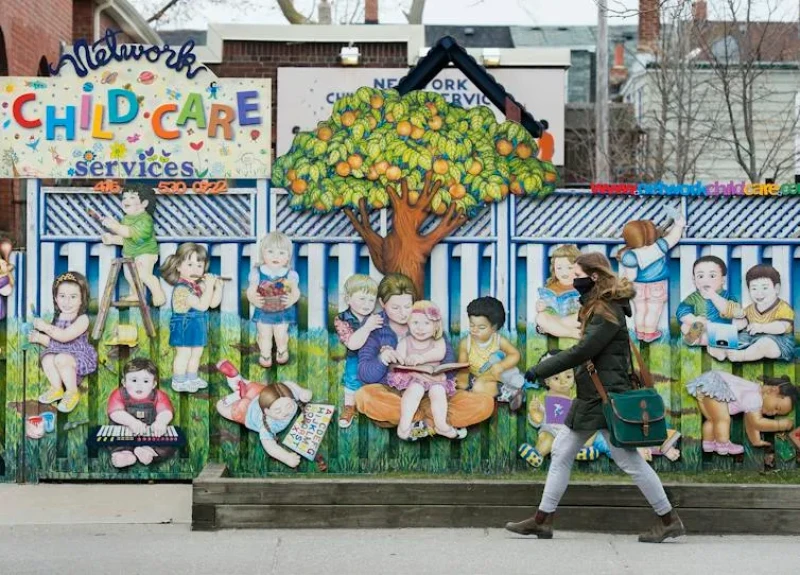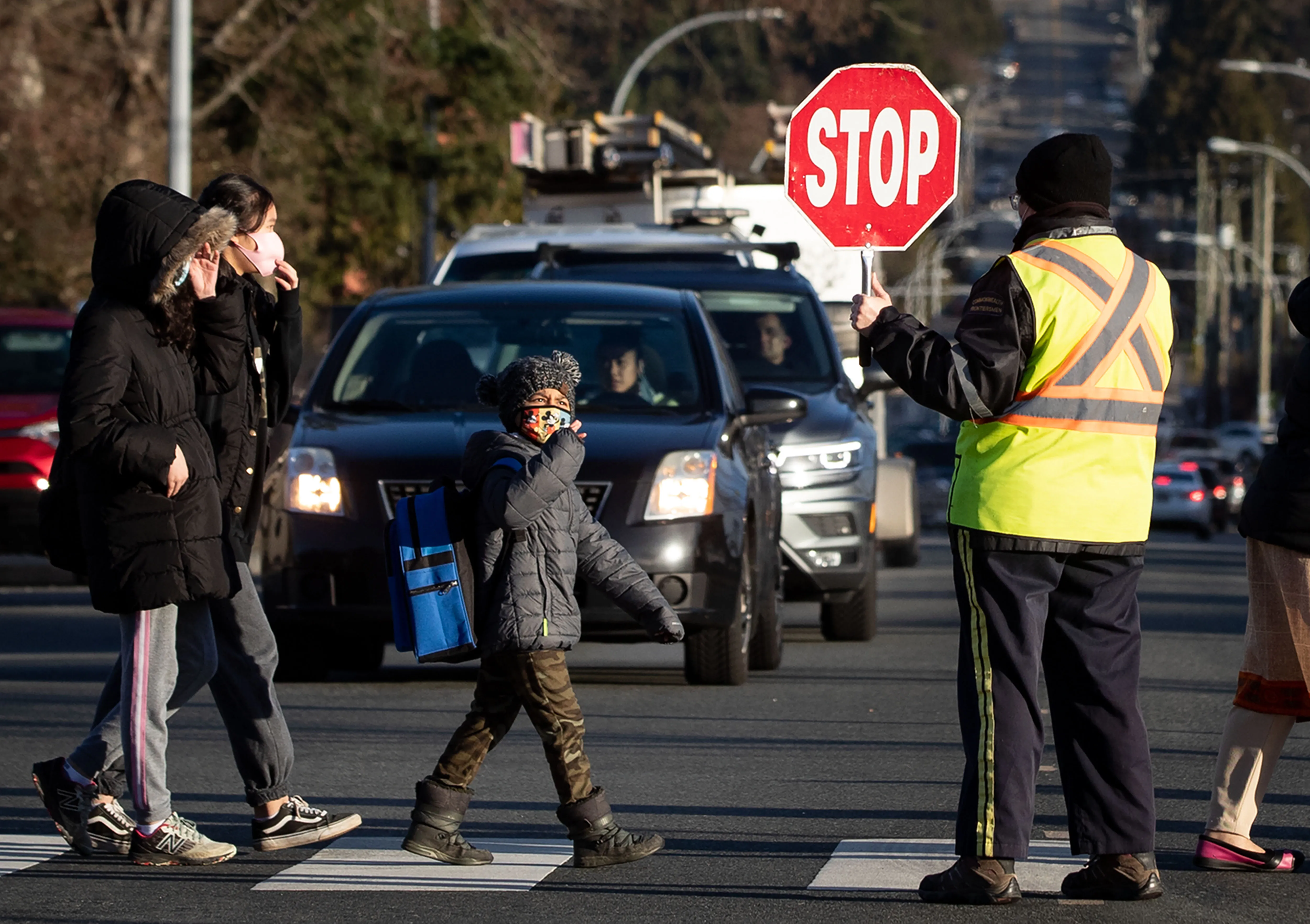A crossing guard stops traffic as students arrive at École Woodward Hill Elementary School, in Surrey, B.C., Feb. 23, 2021. THE CANADIAN PRESS/Darryl Dyck
Authors
There is no doubt that COVID-19 has significantly impacted our lives, including schools and education. Temporary closures of school buildings have highlighted how factors outside school systems affect schools’ capacity to meet students’ needs and support academic achievement. For example, elementary schools can only successfully deliver online education if children have an adult or responsible caregiver with them or they have a reliable internet connection.
There is a large body of research that underscores the importance of particular policies that can support low socio-economic students as well as policies
that align with the most effective education systems globally.
These areas include investing in quality early childhood education, providing adequate mental health and technology support to benefit children in primary and secondary school and funding for post-secondary students. Policy in all these areas can be considered social protection policies. According to UNICEF, such policy reduces “the lifelong consequences of poverty and exclusion.”
Early childhood education
A national child-care strategy has been hotly debated within Canada for some time. Yet despite its detractors, we do know that countries such as Finland — where all children under the school age are provided with the option of early childhood education and care — are consistently lauded globally for high student achievement and post-secondary attendance.
In general, countries with the most family-friendly policies, such as paid maternity/paternity leave and subsidized or free early childhood education, recoup these initial investments through a better-educated citizenry. They also tend to have smaller achievement gaps between the highest and lowest performing students, or are trending in a positive direction — a result that bodes well for policy-makers interested in promoting equity.

A woman passes a closed child care centre in Toronto on April 10, 2020. THE CANADIAN PRESS/Nathan Denette
Mental health, technology infrastructure
COVID-19 has accentuated the challenges that many students face in kindergarten to Grade 12. The shift to remote learning and the increased need for mental health supports have impacted children and families.
Added to this, those children who lack access to appropriate technology or a stable internet connection or a quiet place to study at home face even further unprecedented hardships.
Not surprisingly, these types of challenges are exacerbated for students from low socio-economic backgrounds. Their families require direct social protection policy interventions.
In Canada, power over social policy is divided between the federal and provincial governments, but municipalities also play an important role in the fight against poverty. They provide the infrastructure that ensures that students and their families have an opportunity to succeed: social housing, emergency shelters, subsidized child care, transit passes, and library and recreation services.
Some municipalities have advocated for issues around reducing poverty, affordable housing and homelessness, and broadband connectivity for smaller communities, and helped put these on the national agenda.
Higher education
Canada boasts one of the highest post-secondary enrolment rates in the world. Indeed, the proportion of adults aged 25 to 64 who completed college or university increased to 57 per cent in 2017 from 46 per cent in 2005, the highest rate among OECD countries.
While these results should be celebrated, the ongoing challenges posed by COVID-19 and the child poverty gap, which has increased incrementally between 2015 and 2018, should cause urgent concern. These factors will directly threaten the prospect of university and college attendance for students from lower socio-economic homes and families.
Read more:
Canada’s woeful track record on children set to get worse with COVID-19 pandemic
Even prior to the pandemic, the significant decrease in government funding for Canadian universities and colleges over the last decade has resulted in increased costs and student debt, and deterred many students from pursuing a post-secondary education. The latter is in stark contrast to Nordic countries such as Finland, Norway, Sweden, Denmark and Iceland – where post-secondary education is free or at a low cost. As a consequence, these countries are seen as desirable places for business.
While many may bemoan tax dollars being used to fund post-secondary students, the economic and social benefits are clearly justified – particularly given the increasing human capital demands of a knowledge economy.
The negative effects of reduced government funding have been growing for some time in Canada. We must continually monitor and address how financial challenges exacerbated by COVID-19 in the long-term affect post-secondary education.
It is essential for governments to adopt effective policies far beyond schooling to ensure that the most vulnerable student populations are given a realistic opportunity to excel from kindergarten to Grade 12 and in post-secondary education settings.![]()
Louis Volante, Professor of Education, Brock University; Don A. Klinger, Pro Vice-Chancellor of Te Kura Toi Tangata Division of Education; Professor of Measurement, Assessment and Evaluation, University of Waikato; Livianna Tossutti, Associate professor, Department of Political Science, Brock University, and Melissa Siegel, Professor of Migration Studies and Head of Migration Studies at the Maastricht Graduate School of Governance and UNU-MERIT, United Nations University
This article is republished from The Conversation under a Creative Commons license. Read the original article.




